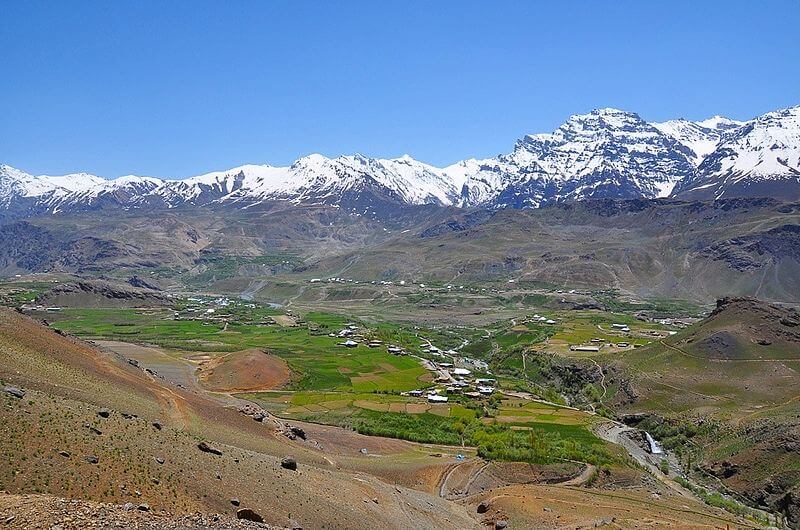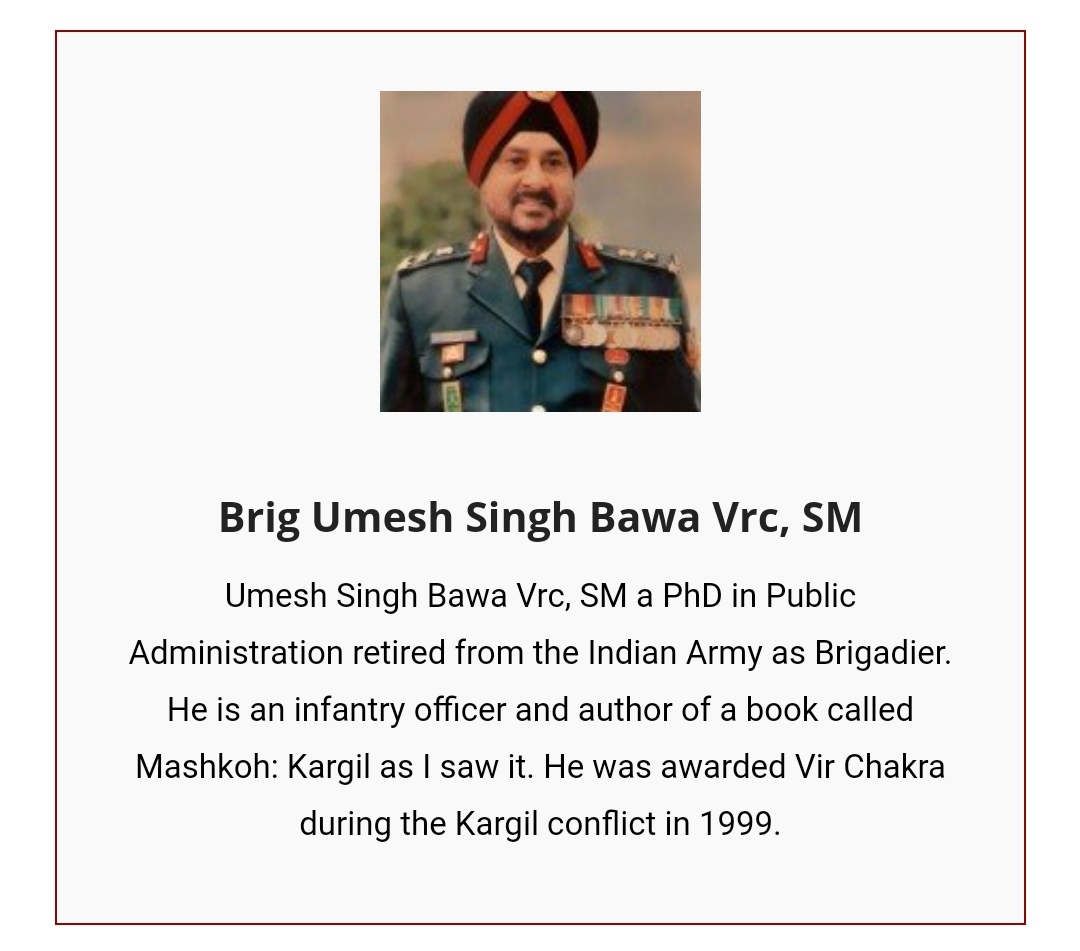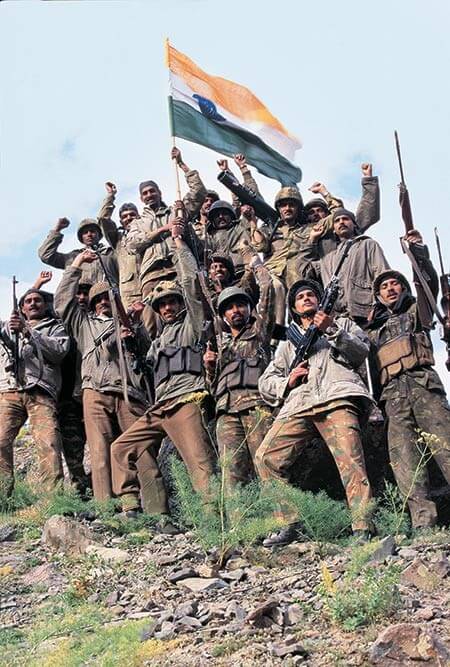The Inside Story: Mashkoh – Kargil As I saw It #1

By

The road of life has many bends. How we take them depends on us. As I sat barely ten km south of the border with Pakistan, my mind went back to Jul 78, when I joined 17th battalion of the Jat regiment as a second lieutenant. At that time, I believed that the chances of leading my unit into battle were virtually nil. How wrong I was! It seemed that fate had intervened, and I was to get the opportunity to command my battalion in war after all.
I could not believe my luck and could barely contain my excitement when I told my wife Indu, on the telephone, that operations were imminent. I could feel the uneasy calm in her voice when I told her that I am in the battle zone. They heard in the television about the Pakistani infiltrators in the Kargil sector and the regular exchange of fire between the troops and the infiltrators.
I also had an uneasy feeling that being a soldier was in direct conflict with my duties as a husband and a father. There was no doubt that I wanted to go to war, but I also felt slightly guilty that I might be reneging on my parental duty to stay alive and bring up my children. As I became more and more embroiled in the planning process, the dilemma faded from my thoughts.
A letter received from a soldier’s father just after we arrived in the battle zone also helped put the issue into perspective. In it, he wished me well and asked me to bring back his son safely from war. The reality of the responsibility I had towards my soldiers had never been so clear.
It is no secret that Pakistan has been smarting from the defeat in 1971. The Siachen skirmishes further heightened tensions between the two countries. The 1990s saw escalating tensions due to separatist activities in Kashmir supported by Pakistan. It, coupled with nuclear tests by both countries in 1998, led to a tense atmosphere. In an attempt to defuse the situation, both countries signed the Lahore Declaration in Feb 1999 to provide a peaceful solution to the Kashmir conflict. However, this was just a proverbial lull before the storm.
Pakistan resorted to treachery in Feb 1999 by intruding into our territory and occupying some winter vacated posts and unoccupied posts on the Indian side of LOC. The days that followed the morning of 03 May 1999 surprised the Army at both strategic and tactical levels. Initially, the intrusions were not detected for several reasons, and it was assumed that it was a minor intrusion by jihadi terrorists. In the initial stages till May end, the units were employed hastily in a knee jerk reaction without obtaining detailed intelligence about the enemy, without adequate preparation, equipment, and fire support leading to heavy casualties.
It was 20 May 99; my unit was placed on 48 hours’ notice to move to the Dras sector. At that time, I was deployed in the Nowgaon sector in counter infiltration role in a high-altitude area. We were part of 79 Mountain Brigade, the corps reserves. At that time, the war in Kargil was intensifying. We heard that few Pakistani intruders had intruded into our territory, and Army operations were on to push them back. Sporadic skirmishes were taking place every day.
17 Jat was inducted into the Mashkoh valley on 26 May 99. Point 4875, which was the most dominating feature in Mashkoh valley at the height of 16200 feet. The slopes were almost 70 degrees. The rocks were barren without any cover. The ridges were virgin with no foot tracks leading to them. There was not enough oxygen to breathe. Kargil-based brigade commander told us dryly that there were not more than eight to ten infiltrators on the heights, “just go up,” he ordered with casual bravado, “and bring them down by their neck.”
17 Jat was inducted into the Mashkoh valley on 26 May 99. Point 4875, which was the most dominating feature in Mashkoh valley at the height of 16200 feet. The slopes were almost 70 degrees. The rocks were barren without any cover. The ridges were virgin with no foot tracks leading to them. There was not enough oxygen to breathe. The brigade commander told us dryly that there were not more than eight to ten infiltrators on the heights, “just go up,” he ordered with casual bravado, “and bring them down by their neck.”
The unit was initially tasked to capture Point 4540 east of Point 4875 and Rocky Knob to the north of 4875. 4540 was captured as planned, but while attempting to occupy Rocky Knob, seven enemy machine guns simultaneously opened fire at the platoon. Six soldiers were martyred instantly, and ten others were seriously wounded. The platoon was bloodied so severely that it finally hit me what we were really up against. With virtually no cover and intruders entrenched all across the ridge, the advance was stopped even as it began.
I had never been in a situation like this. The enemy was occupying the critical heights, and we were at the base of the hills and vulnerable to his fire. These were heavily armed and dangerous men sitting on dominating heights and determined to kill anyone challenging them. Were any of us to fall into their hands, we could expect to be tortured in unspeakable ways and then decapitated for all to see. They wanted nothing less than to kill us before we dared to come near them.
The Indian Army ascertained the incursion points and deployed four divisions to take back the strategic peaks for securing its main supply line in Kashmir. Indian Army responded by launching offensive operations to recapture their territory named “Operation Vijay.” It was the first time that offensive operations were undertaken in high altitude area at this scale.
Pakistan was dominating the NH 1D at several places and interfering with our vehicular movements on it. The initial attacks were aimed at gaining control of the hills overlooking NH 1D. The capture of Tololing on 13 June 99 proved to be a turning point and slowly tilted the war in India’s favour. It was also the first victory of the 8 Mountain Division. It verified the adage, “no defences are impregnable for a determined attacker.”
My reconnaissance patrols reported enemy strength of approximately 70 to 80 persons on Point 4875, as against eight to ten as intimated to us earlier. It required three battalions to capture Point 4875. The GOC 8 Mountain Division finally tasked 79 Mountain Brigade to capture 4875.

The valiant Jats captured their objective. My joy in success was boundless. My trust reposed on the Jats was correct. I still remember General Sir Claude Auchinleck’s words about Jats, “If things look bleak and danger threatened, I would ask nothing better than to have Jats beside me, in the face of the enemy.” My young officers did a fantastic job, each one leading from the front. In this bloody war, I lost one officer, one JCO, and 34 soldiers. It was a heavy price to pay.
The Indian Army troops had done incredibly well. Their outstanding performance would remain indelibly etched in military history. I know of no other example where such determination, grit, the spirit of self-sacrifice, and devotion to duty have been displayed. New methods for the use of artillery and air power were coined. The amalgamation of raw courage and firepower brought about the enemy’s psychological collapse sitting at impregnable heights.
After all the blood, sweat, and tears that my unit had spilt there, I felt torn. As a commanding officer, I still carry the burden of losing so many men during the war. As a society, we have to take care of our martyrs and their families because we owe our nation’s safety to them. But even as we praise our martyred soldiers’ courage, we are blind to the profound grief of the war widows. Yes, these brave women are proud of their husbands’ sacrifice, but they are also staggering under a colossal loss and have little hope for succour in the system. They are easy targets to be exploited by everyone from unscrupulous family members to corrupt officials in the system.
Kargil conflict ended twenty-one years ago, and yet doubts and controversies persist. Many questions continue to nag. The more pertinent being: why ingress was not detected early enough and in real-time? Why the Indian Air Force (IAF) showed such hesitancy to come on board? Was there a dysfunctional state of joint operational planning in the defence? Why our contingency plans were not up to the mark? Why were our troops rushed to evict the intruders without proper planning? Why our training for offensive operations in high-altitude terrain was lacking? Why our response was mainly tactical and strategic options were not considered? We were short of required equipment and weapons, which forced the COAS to say, “We will fight with whatever we have.”




